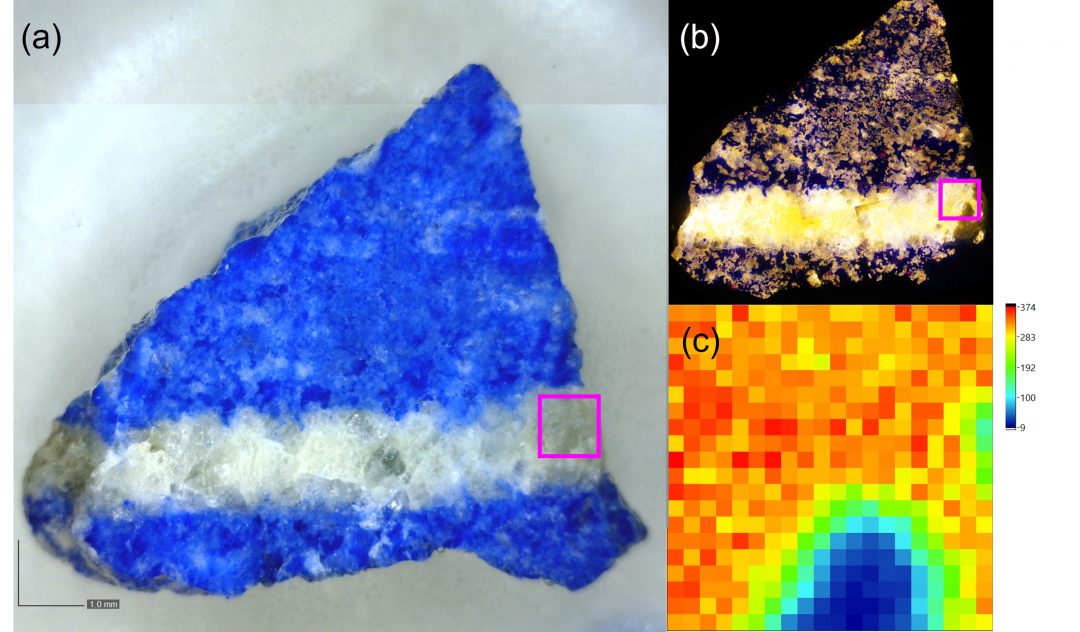User: Laura Guidorzi
ORCID: https://orcid.org/0000-0002-6976-1719
Organisation: University of Torino, Physics Department
Technique requested: Particle Induced X-ray Emission (PIXE)
Ion Beam Induced Luminescence (IBIL)
Particle Induced Gamma-ray Emission (PIGE)
Facility: Grand Louvre Accelerator for Elemental Analysis (FR)
Lapis lazuli is a semi-precious blue stone widely used for different purposes since antiquity but, at present, there is still some lacking information about both its trade in ancient times and the quarries exploited from different civilisations. A systematic study of lapis lazuli provenance comparing physico-chemical properties of rocks and historical objects is carried out by our group since 2007. Ion Beam Analysis was chosen as a principal technique for our measurements due to its non-invasiveness and its possibility to investigate single crystals of specific mineral phases among all constituting this stone. The microbeam line at NewAGLAE is the optimal solution for our scopes, as it works with an extracted beam that allows analysing also those artefacts that are too precious to be measured in vacuum, granting at the same time very low detection limits thanks to its advanced setup. During our measurements within the SIBILLA project, we were able to analyse in 5 days almost 20 archaeological samples, retrieved from a variety of sites in Iran, Pakistan and Oman, all located along lapis lazuli ancient trade routes developed between IV and II millennium BCE. Preliminary results, obtained in particular from μ-PIXE and μ-IBIL data, seems to exclude for all samples a Siberian provenance and different characteristics of the raw material were detected also among samples coming from the same archaeological site. Further data analysis is ongoing and it will be decisive for a definitive provenance attribution to these samples.

